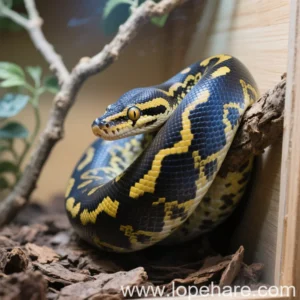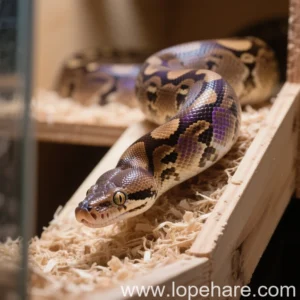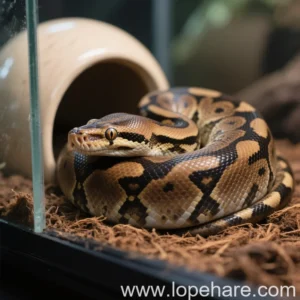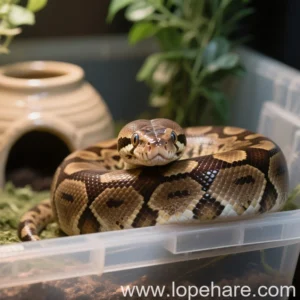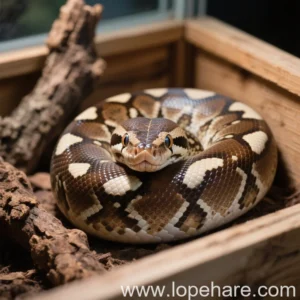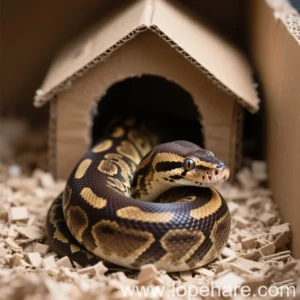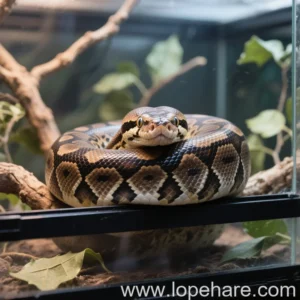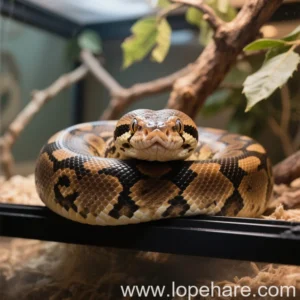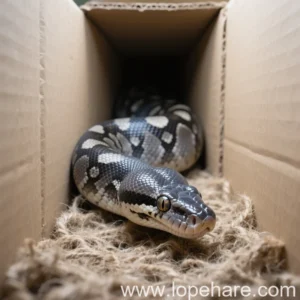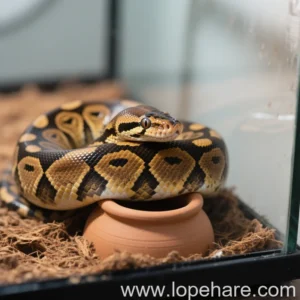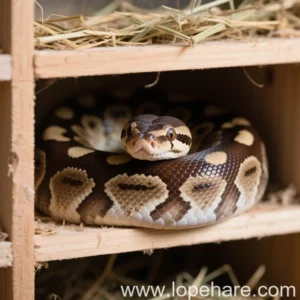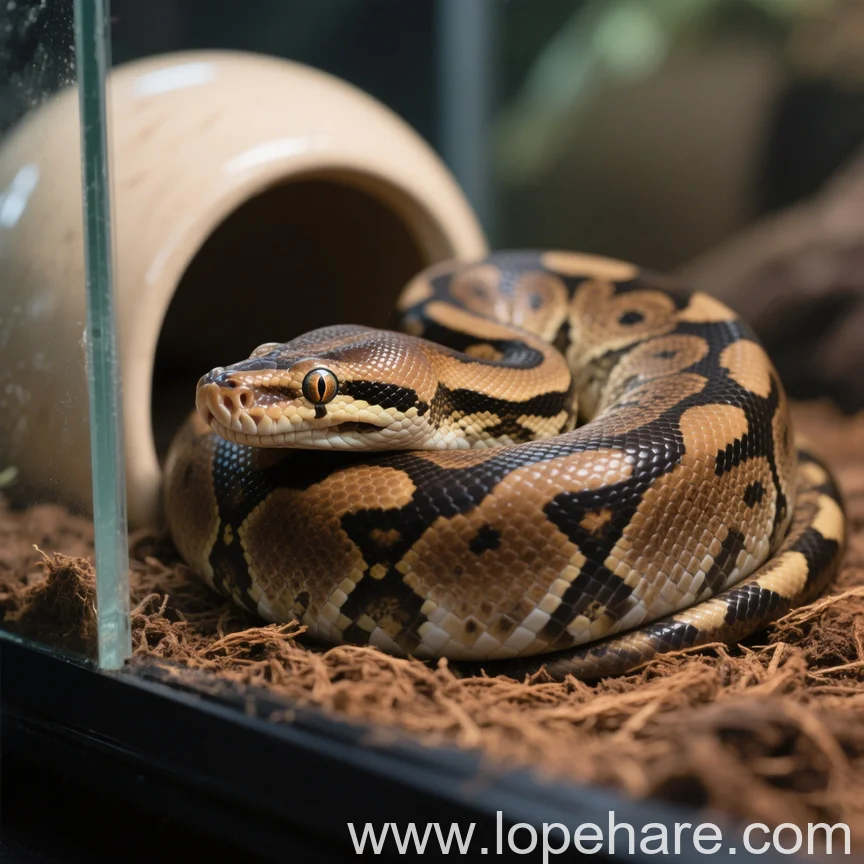
Reptile Husbandry
Ball Python Coexistence: Tips for Keeping Them with Other Pets Safely
Here at lopehare, as a resource for those passionate about niche pets, we frequently encounter questions about managing multi-pet households, especially when one of those pets is a reptile like the popular Ball Python (Python regius). While ball pythons are known for their docile nature and relatively manageable size, they are still predatory animals. This fundamental fact is the cornerstone of understanding how to ensure safely housing ball pythons with other pets, particularly those that might be perceived as prey. It’s crucial to approach this topic with realism and prioritize safety above all else.
Understanding Ball Pythons: Nature & Behavior
Ball pythons are constrictors native to West and Central Africa. In the wild, their diet primarily consists of small mammals and birds (source). While captive-bred ball pythons are typically fed rodents and are often quite placid, their predatory instincts remain. They possess heat-sensing pits near their mouths that detect warm-blooded prey, and their method of hunting involves striking and constricting. This is why size disparity and the natural prey drive are critical factors when considering coexistence with other household animals.
General Principles for Safe Coexistence
Regardless of the specific type of other pet you have, several universal principles apply when keeping them in the same household as a ball python:
- Strict Separation: Ball pythons should *never* be allowed to free-roam or interact directly with other pets without constant, vigilant supervision – and even then, it’s generally advised against.
- Know Your Pets: Understand the temperament and behavior of all your animals. Some dogs or cats have a strong prey drive; some small animals are naturally fearful.
- Hygiene: Maintain separate feeding areas, cleaning supplies, and strict handwashing protocols between handling different species, especially between reptiles and mammals/birds, to prevent disease transmission.
- Risk Assessment: Always assume the potential for an accident exists and take steps to mitigate it. A moment of oversight can have tragic consequences.
Secure Enclosure: The Absolute Must
The single most important safety measure is the ball python’s enclosure. It must be escape-proof. This means:
- Sturdy construction (glass, PVC, or wood with glass/acrylic front).
- A secure, locking lid or doors. Simple screen lids are insufficient unless they have robust clips or latches.
- No gaps or openings large enough for the snake to push through. Even small snakes can be surprisingly adept escape artists.
- Placement in an area where other pets cannot easily knock it over or tamper with it.
A well-secured enclosure protects both your ball python from potential harm by other pets and your other pets from your ball python.
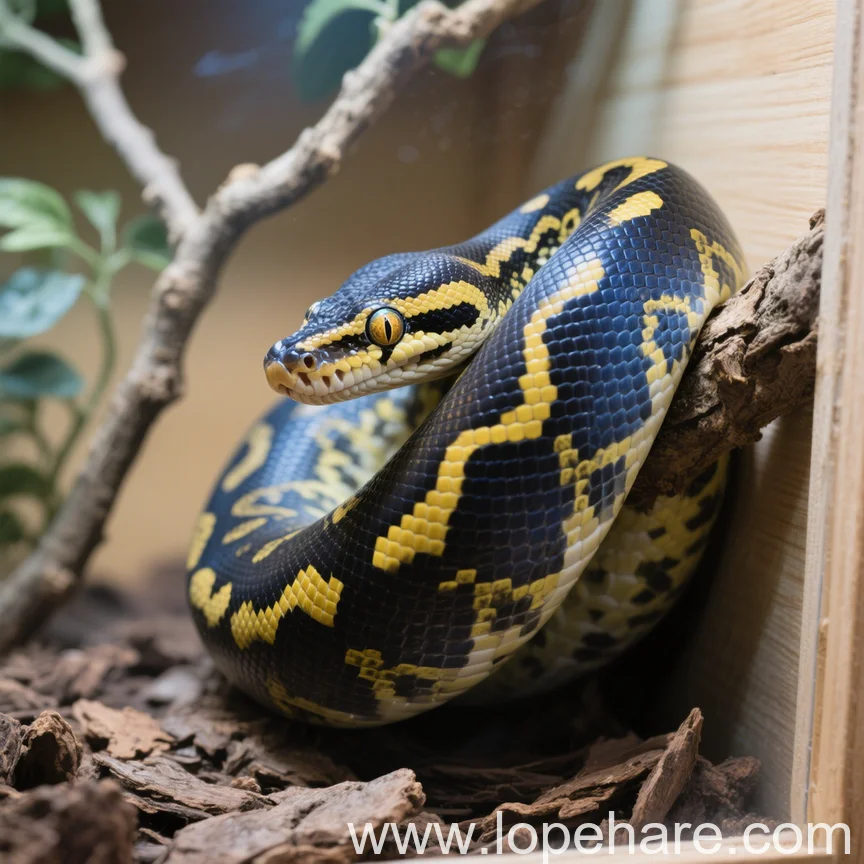
Ball Pythons and Mammals (Dogs & Cats)
Dogs and cats, despite being common household pets, pose distinct risks to a ball python. A dog or cat may view a snake as a toy, a threat, or even potential prey, depending on their breed and temperament. A ball python, while not seeing a large mammal as food, could strike out of fear if harassed. The risk here is primarily injury to the snake from scratching, biting, or rough handling by the mammal, or stress that leads to health issues.
- Prevention: Keep the snake’s enclosure in a room where dogs and cats are not allowed unsupervised. Ensure dogs are trained to ignore the enclosure. Never leave the snake out of its enclosure when dogs or cats are present.
- Supervision: If dogs or cats must be in the same room as the enclosure, they should be supervised.
Ball Pythons and Rodents (Prey Animals)
This is where the predatory instinct becomes most relevant. Pets like hamsters, gerbils, rats, mice, guinea pigs, and even rabbits fall squarely into the ball python’s natural prey category. Keeping a ball python in a multi-pet home with these animals requires extreme caution.
Never House Together: It is absolutely unthinkable and highly dangerous to ever house a ball python in the same enclosure or allow it direct contact with rodents or similar prey animals. The snake will eventually see them as food, even if they “get along” initially. This is a fundamental rule in preventing conflicts between ball pythons and rodents.
- Physical Separation: The most effective method is to keep these pets in entirely separate rooms, ideally on different floors, with secure doors between them.
- Scent Management: Be mindful of scents. Handling a rodent pet then immediately handling your ball python without washing your hands could lead to a feeding response from the snake, potentially resulting in a bite.
- Enclosure Reinforcement: Ensure the rodent’s enclosure is also secure, as a desperate snake might try to access it if it were loose (a nightmare scenario emphasizing why snake enclosure security is paramount).
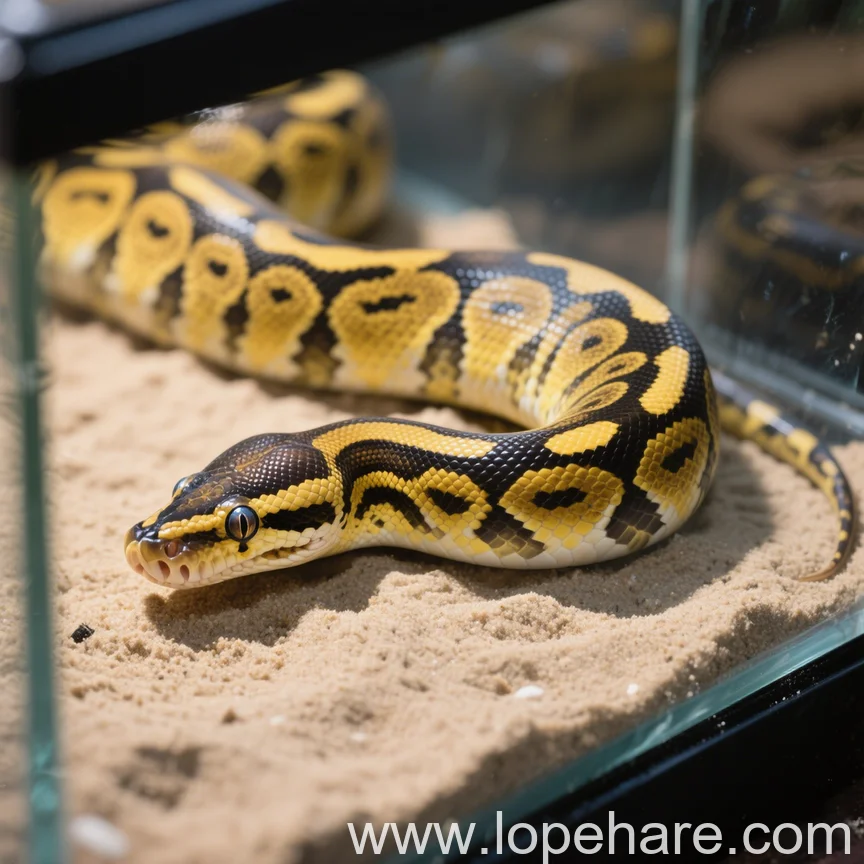
Ball Pythons and Birds
Similar to rodents, smaller birds can be seen as prey by a ball python. Larger birds might pose a threat to the snake with their beaks and talons if given the opportunity. Again, strict physical separation is key.
- Separate Rooms: Keep bird cages and the ball python enclosure in different, closed-off rooms.
- Handling Protocol: Be cautious when handling both animals on the same day, washing hands and potentially changing clothes between handling sessions.
Ball Pythons and Fish/Aquatics
Most fish and aquatic pets are not a direct concern for a terrestrial ball python in terms of predation. The primary risk here is the snake escaping and somehow accessing the water body, which could lead to drowning or other complications for the snake.
- Enclosure Security: Again, a secure snake enclosure prevents escape.
- Aquarium Lids: Ensure aquariums have secure lids if they are in the same area, simply as a general safety measure for the aquatic pets.
Ball Pythons and Other Reptiles/Exotics
Cohabitation of ball pythons with *any* other animal, including other ball pythons (outside of controlled breeding), is generally not recommended by experienced keepers and veterinary professionals. Different species have different needs (temperature, humidity, diet), and housing them together can lead to stress, competition for resources, injury, or disease transmission. cannibalism is also a risk among many reptile species.
- Separate Enclosures: Every ball python, and indeed most individual reptiles of different species, needs its own appropriately sized and set up enclosure.
- Quarantine: Any new reptile should go through a strict quarantine period in a separate location before being introduced to the general area of existing pets to check for parasites or diseases.

Managing Interactions and Risk
Even with all precautions, it’s vital to be ever-vigilant. We at lopehare believe that responsible pet ownership means anticipating potential problems. If you ever take your ball python out of its enclosure, ensure other pets are secured elsewhere. Be aware of the body language of all your animals. Stress in any pet can manifest in unexpected ways.
Educate Your Household: Ensure everyone in your home understands the rules regarding the ball python and interaction with other pets. Accidents can happen quickly if rules are not followed diligently by all members of the household.
By adhering to strict separation, utilizing highly secure enclosures, understanding the natural instincts of all your pets, and maintaining diligent hygiene and supervision, you significantly reduce the risks associated with keeping ball pythons in a multi-pet environment. It’s a commitment to creating distinct, safe zones for each animal.
Conclusion: A Managed Environment is Key
While the idea of a harmonious multi-species household is appealing, the reality when a ball python is involved is that harmony is achieved through strict management and separation, not interaction. Ball pythons can absolutely live in homes with other pets, but it requires responsible, proactive measures from the owner. Prioritizing secure housing and eliminating opportunities for contact between predator and potential prey species is the best way to ensure the safety and well-being of all your beloved companions.
Citations
Wikipedia contributors. (2024, May 15). Ball python. In Wikipedia, The Free Encyclopedia. Retrieved from https://en.wikipedia.org/w/index.php?title=Ball_python&oldid=1223952540
